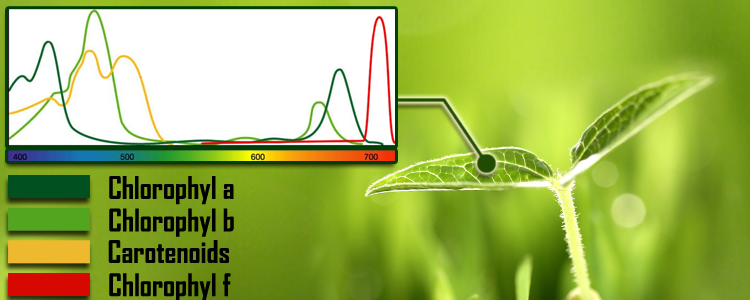

— Blogs —
—Products—
 Consumer hotline +8618073152920
Consumer hotline +8618073152920 WhatsApp:+8615367865107
Address:Room 102, District D, Houhu Industrial Park, Yuelu District, Changsha City, Hunan Province, China
Product knowledge
Time:2024-02-01 15:05:37 Popularity:657
Photosynthetically active radiation (PAR) refers to the portion of the electromagnetic spectrum that plants are able to use for photosynthesis. Specifically, it includes wavelengths of light between 400 and 700 nanometers. PAR is important for plant growth and development, as it provides the energy needed for plants to convert carbon dioxide and water into glucose and oxygen through photosynthesis. PAR is typically measured in units of micromoles per square meter per second (μmol/m²/s) and is often used by scientists and horticulturists to determine the amount and quality of light available for plant growth.
The amount of PAR that reaches the Earth's surface depends on several factors, including the time of day, season, cloud cover, latitude, and topography. PAR levels are highest during the daytime and in summer months, when the sun is brightest. Cloud cover blocks some PAR, while clear skies allow more radiation to reach the ground. Altitude also affects PAR levels because the atmosphere filters out some wavelengths as you move closer to the top of mountains.

Plants use PAR to power their photosynthetic reactions, which convert carbon dioxide and water into glucose and oxygen. This process releases energy that plants use to grow and develop, as well as produce food for themselves. PAR is essential for plant growth and development because it provides the energy necessary for photosynthesis.
In addition, by understanding the relationship between PAR and plant growth, agricultural practices and ecosystem management can be carried out more scientifically and rationally, such as improving crop yields by optimising irrigation and fertilisation schedules, or adjusting the type and layout of urban greenery to suit different light conditions. Therefore, the study and monitoring of PAR is of great significance for agricultural production, ecological conservation, and climate change response.
Remark:
The Photosynthetically Active Radiation sensor (PAR sensor) is a device specifically designed to measure the effective radiation required for plant photosynthesis. These sensors are commonly used in areas such as studying plant growth activity, simulating light control, and light spot distribution underneath tree canopies.
The core component of a PAR sensor is usually a filter that transmits light in the PAR wavelength range (typically 400-700 nm) while blocking light at other wavelengths. This filter focuses the light onto a photodetector that converts the light energy into an electrical signal for measurement and recording.
Overall, the PAR sensor is a very useful device that helps scientists and gardeners to understand the photosynthesis process of plants, so that they can better control and optimise their growing environment.
Related recommendations
Sensors & Weather Stations Catalog
Agriculture Sensors and Weather Stations Catalog-NiuBoL.pdf
Weather Stations Catalog-NiuBoL.pdf
Related products
 Combined air temperature and relative humidity sensor
Combined air temperature and relative humidity sensor Soil Moisture Temperature sensor for irrigation
Soil Moisture Temperature sensor for irrigation Soil pH sensor RS485 soil Testing instrument soil ph meter for agriculture
Soil pH sensor RS485 soil Testing instrument soil ph meter for agriculture Wind Speed sensor Output Modbus/RS485/Analog/0-5V/4-20mA
Wind Speed sensor Output Modbus/RS485/Analog/0-5V/4-20mA Tipping bucket rain gauge for weather monitoring auto rainfall sensor RS485/Outdoor/stainless steel
Tipping bucket rain gauge for weather monitoring auto rainfall sensor RS485/Outdoor/stainless steel Pyranometer Solar Radiation Sensor 4-20mA/RS485
Pyranometer Solar Radiation Sensor 4-20mA/RS485
Screenshot, WhatsApp to identify the QR code
WhatsApp number:+8615367865107
(Click on WhatsApp to copy and add friends)